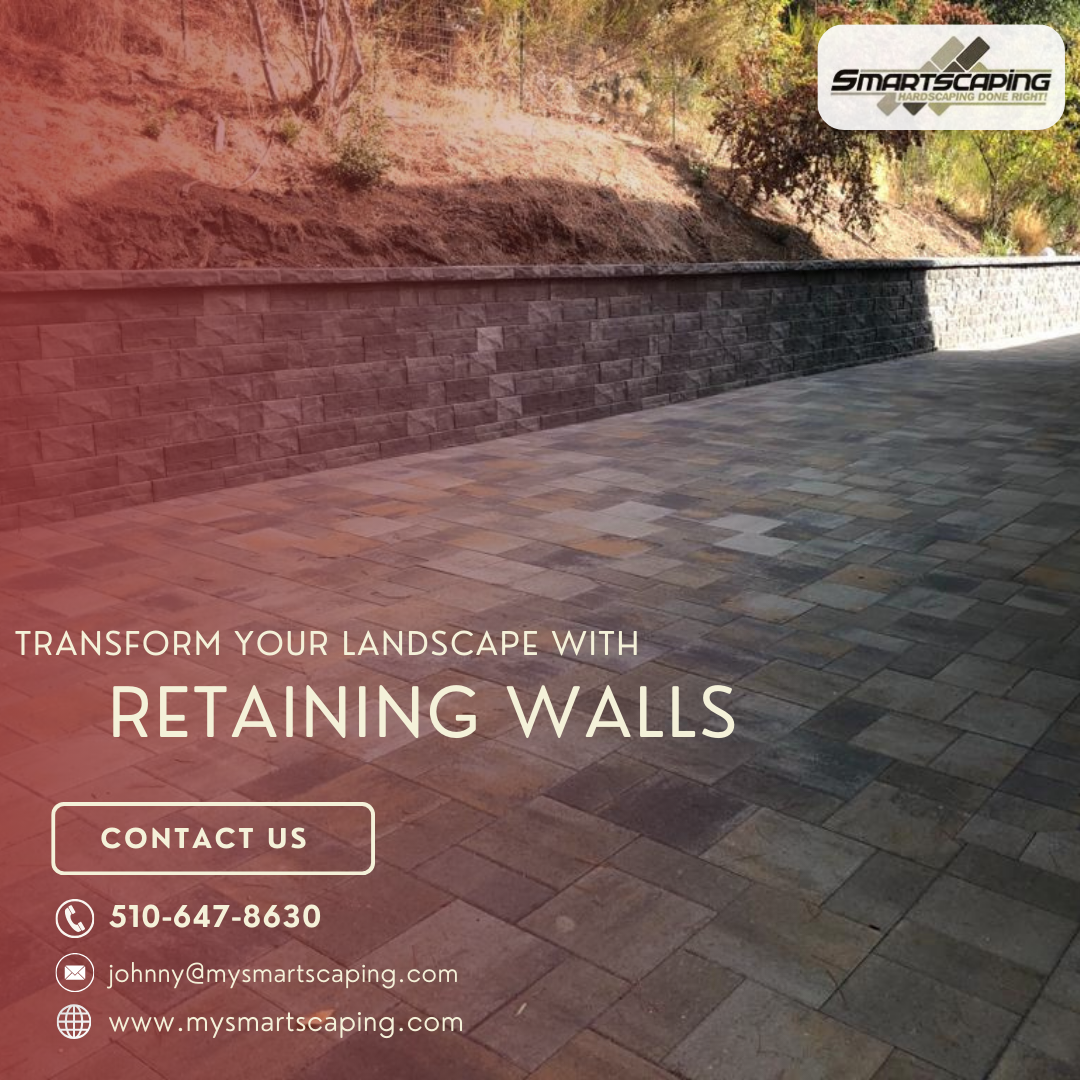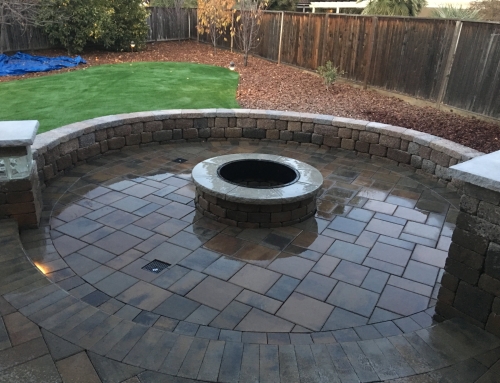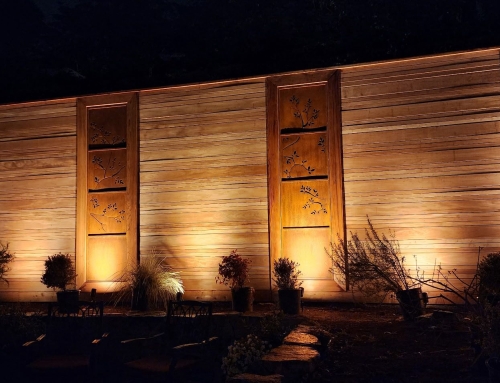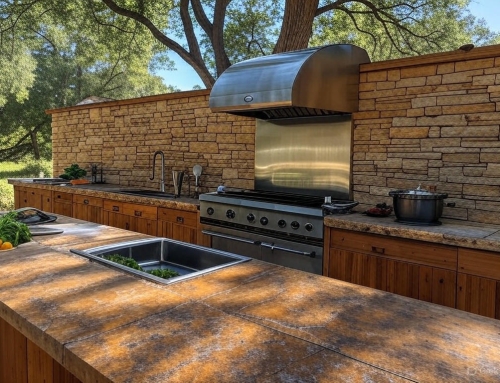Retaining walls are more than just functional structures—they’re also a major element in landscaping design, helping to prevent soil erosion, manage sloped land, and create usable outdoor spaces. But when it comes to building one, the same questions often come up:
1. Is a Concrete Retaining Wall Cheaper Than Blocks?
When choosing between a poured concrete retaining wall and one built with concrete blocks (also called CMUs—Concrete Masonry Units), cost is one of the biggest deciding factors. While both materials are durable and long-lasting, the initial expense, labor requirements, and long-term maintenance differ.
Poured Concrete Retaining Walls
-
Pros: Strong, seamless appearance, fewer joints, and customizable shapes. Excellent for modern designs.
-
Cons: Requires skilled labor and specialized equipment. Any cracks can be costly to repair.
Cost range: Typically $30–$50 per square foot, depending on thickness, site preparation, and reinforcement.
Concrete Block Retaining Walls
-
Pros: Easier for DIY projects, modular design, and replacement of individual blocks is simpler.
-
Cons: Visible joints, may require more finishing work for aesthetics, and slightly less strength than reinforced poured concrete.
Cost range: Around $20–$40 per square foot, though decorative blocks can push prices higher.
Which Is Cheaper?
In most cases, concrete block retaining walls are cheaper for small to mid-size projects because they require less specialized labor and equipment. However, poured concrete can be more cost-effective for large, complex walls because it offers structural advantages and fewer gaps for water infiltration.
2. How to Calculate the Cost of a Retaining Wall
Before committing to a retaining wall project, you’ll want to know how much it’s going to cost. While there are online calculators, understanding the factors yourself will give you a clearer picture and help you avoid underestimating your budget.
Step 1: Measure the Wall Dimensions
-
Height (H) × Length (L) = Total Square Footage
For example, a wall that’s 4 feet tall and 20 feet long has:
4 × 20 = 80 square feet of surface area.
Step 2: Choose Your Material
Multiply your total square footage by the average cost per square foot for your chosen material:
-
Block wall at $25/sq ft: 80 × $25 = $2,000
-
Poured concrete at $35/sq ft: 80 × $35 = $2,800
Step 3: Factor in Site Preparation
Site preparation can add significantly to the budget, especially if excavation, grading, or demolition of an old wall is needed.
-
Basic site prep: $200–$500
-
Heavy excavation or removal: $1,000+
Step 4: Include Drainage Costs
Drainage systems (gravel, perforated pipe, geotextile fabric) can add $10–$20 per square foot but are essential to prevent hydrostatic pressure damage.
Step 5: Add Labor Costs
If you’re hiring professionals, labor will typically account for 40–60% of the total cost. This varies by region and the complexity of the project.
Example Calculation:
For an 80 sq ft block wall:
-
Material: $2,000
-
Site prep: $400
-
Drainage: $1,000
-
Labor (50% of material + drainage): $1,500
Total Estimated Cost: $4,900
3. How Much Is a 4-Foot Retaining Wall?
A 4-foot retaining wall is a common height for residential projects—tall enough to hold back soil on sloped yards, yet usually within building code limits that avoid requiring an engineer’s approval in many areas.
Material Cost Estimates for 4 Feet Tall (Per Linear Foot)
-
Concrete block: $60–$100 per linear foot
-
Poured concrete: $75–$125 per linear foot
-
Natural stone: $80–$150 per linear foot
Total Cost for Different Lengths
Let’s break it down based on length:
| Wall Length | Concrete Block | Poured Concrete | Natural Stone |
|---|---|---|---|
| 10 ft | $600–$1,000 | $750–$1,250 | $800–$1,500 |
| 20 ft | $1,200–$2,000 | $1,500–$2,500 | $1,600–$3,000 |
| 30 ft | $1,800–$3,000 | $2,250–$3,750 | $2,400–$4,500 |
Keep in mind that drainage, permits, and labor are often not included in these basic material cost estimates.
4. Does a 4-Foot Retaining Wall Need Drainage?
Absolutely. Even a 4-foot retaining wall needs proper drainage to prevent structural failure. Water is heavy—about 62 pounds per cubic foot—and when trapped behind a wall, it exerts hydrostatic pressure. Without drainage, this pressure can cause walls to bulge, crack, or collapse.
Drainage Components You’ll Need
-
Gravel Backfill – Helps water filter down to drainage pipes. Typically 12–18 inches thick behind the wall.
-
Perforated Drain Pipe – Installed at the base of the wall to carry water away.
-
Geotextile Fabric – Prevents soil from clogging the gravel and pipe system.
-
Weep Holes (optional) – Small openings in the wall that allow water to escape.
Cost of Adding Drainage
Drainage systems can add $500–$2,000 to your project depending on wall size and site conditions. While this may seem like an added expense, it’s an investment that protects your wall for decades to come.
5. Other Factors That Influence Retaining Wall Costs
Beyond the basics, a few variables can significantly affect the price of your wall:
-
Soil Type – Clay-heavy soil retains more water, increasing the need for strong drainage systems.
-
Access to the Site – Limited access may require hand labor instead of machinery, raising costs.
-
Permit Requirements – Many areas require permits for walls over 3–4 feet. Permit fees can range from $50 to $500.
-
Design Features – Curved walls, decorative finishes, or integrated seating add both beauty and cost.
6. When to Hire Professionals
While small landscaping walls can be DIY-friendly, a 4-foot retaining wall is at the point where professional expertise is worth considering. Proper foundation preparation, drainage installation, and compliance with local codes require experience.
Hiring retaining wall contractors ensures your investment is built to last, complies with safety standards, and minimizes long-term repair costs. Professionals also have access to better materials, specialized tools, and bulk pricing that might offset some of the labor expenses.
7. Cost-Saving Tips Without Cutting Corners
If you’re budget-conscious but still want a quality retaining wall, here are some strategies:
-
Opt for Straight Lines Over Curves – Curved designs require more cuts and custom fitting.
-
Choose Mid-Range Materials – Skip premium decorative blocks unless aesthetics are your top priority.
-
Handle Some Prep Work Yourself – Clearing vegetation or small-scale grading can reduce labor hours.
-
Get Multiple Quotes – Prices vary widely between contractors, so get at least three bids.
-
Build in Stages – If your property allows, break large walls into smaller segments over time.
8. Final Takeaways
-
Concrete blocks are generally cheaper than poured concrete for small to medium retaining walls, but the choice also depends on style, durability needs, and long-term maintenance.
-
Calculating cost involves measuring wall size, choosing materials, factoring in site preparation, drainage, and labor.
-
A 4-foot wall can range from $600 to $150 per linear foot, depending on the material, with drainage adding extra cost.
-
Drainage is non-negotiable for any retaining wall, even at 4 feet, to prevent water-related damage.
By weighing your options carefully and understanding the full scope of costs, you can make an informed decision that fits both your budget and your landscaping goals. Whether you choose block or concrete, proper installation and drainage are key to ensuring your retaining wall stands strong for decades.







